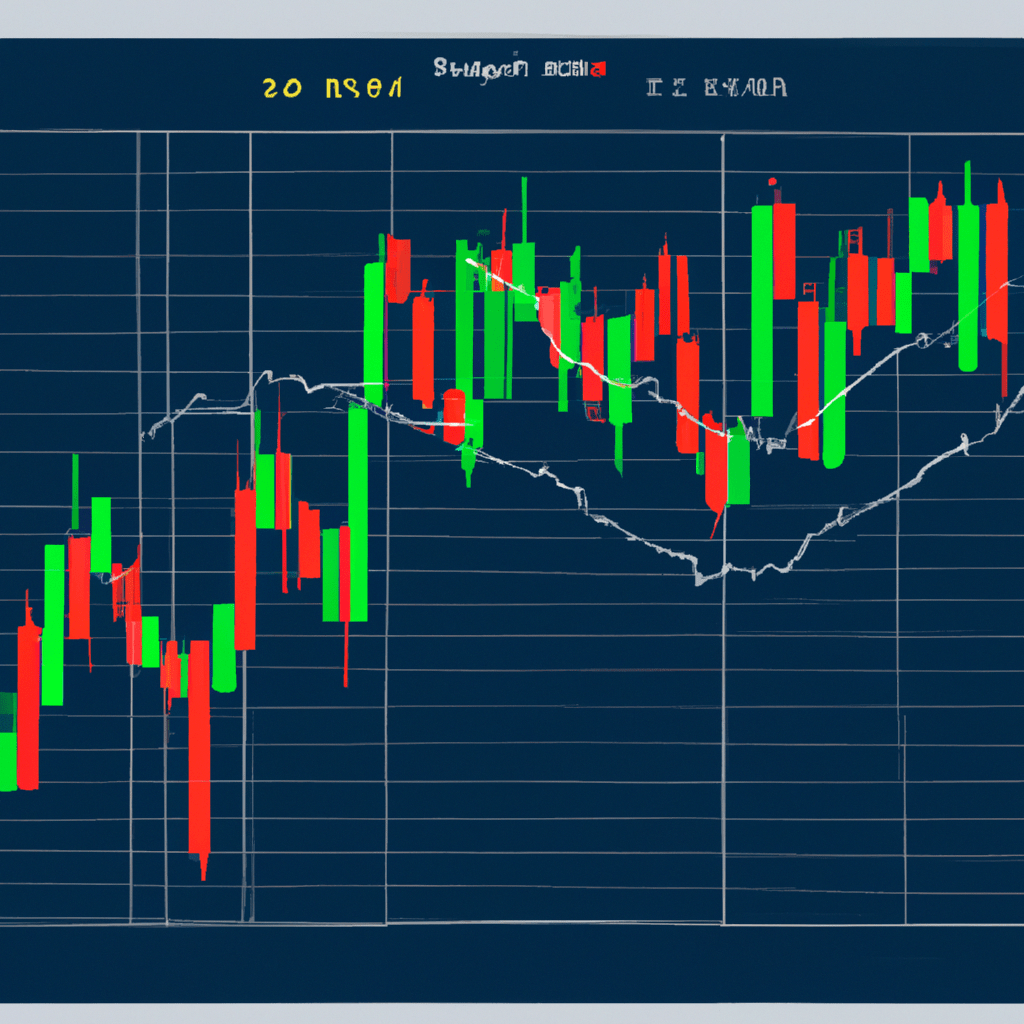Forex trading involves buying, selling, and exchanging currencies on a global market. It is the largest financial market with a daily trading volume of $6.6 trillion. The basics of forex trading, different methods, and the importance of tools like charts and signals are explained. Risks and risk management techniques are highlighted. Utilizing tools and strategies like forex charts, signals, spread betting, and CFD trading can maximize profits in the forex market. These methods offer benefits such as leverage, access to forex tools, flexibility, and low barriers to entry. Traders should practice risk management and make informed decisions using available resources.
In today's fast-paced and ever-evolving financial landscape, forex trading has emerged as a popular investment option for individuals seeking to capitalize on the fluctuations in global currency markets. With its potential for high returns and the ability to trade around the clock, forex trading has become an exciting and lucrative endeavor for many. However, navigating the complexities of this market can be daunting for beginners. Hence, this comprehensive guide aims to provide a solid foundation by explaining the basics of forex trading in Section 1. Additionally, Section 2 will delve into the various forex trading tools and strategies that can be employed to maximize profits. Lastly, Section 3 explores the benefits of spread betting and CFD trading in the forex market, shedding light on these alternative approaches. Whether you are a novice seeking to understand the fundamentals or an experienced trader looking to enhance your skills, this article will equip you with the knowledge and insights necessary to succeed in the forex trading arena.
1. “Understanding the Basics of Forex Trading: A Comprehensive Guide to Get Started”

Forex trading, also known as foreign exchange trading, is a decentralized global market where traders can buy, sell, and exchange currencies. It is the largest and most liquid financial market in the world, with an average daily trading volume of around $6.6 trillion. Understanding the basics of forex trading is essential for anyone looking to get started in this exciting and potentially lucrative market.
To begin with, forex trading involves the simultaneous buying of one currency and selling of another. Currencies are always traded in pairs, such as EUR/USD or GBP/JPY. The first currency in the pair is called the base currency, while the second currency is referred to as the quote currency. The exchange rate between the two currencies determines how much of the quote currency is needed to buy one unit of the base currency.
One of the key concepts in forex trading is the spread, which refers to the difference between the buying and selling price of a currency pair. This spread is typically expressed in pips, which is the smallest unit of measurement in forex trading. The spread can vary depending on market conditions and the liquidity of the currency pair being traded.
Forex trading can be done through various methods, including spot trading, futures contracts, options, and spread betting. Spot trading involves the direct exchange of currencies at the current market price. Futures contracts and options, on the other hand, allow traders to speculate on the future price movements of currency pairs. Spread betting is a form of derivative trading where traders can speculate on the price movements of currency pairs without actually owning the underlying assets.
To make informed trading decisions, forex traders rely on various tools and resources. Forex charts are graphical representations of price movements over time and are used to identify trends and patterns. These charts can be analyzed using technical analysis tools and indicators to predict future price movements. Additionally, traders can use forex signals, which are recommendations or alerts generated by professional traders or automated systems, to identify potential trading opportunities.
It's important to note that forex trading carries a level of risk, and traders should always be mindful of potential losses. Proper risk management techniques, such as setting stop-loss orders and using appropriate position sizing, are crucial to protect capital and minimize losses.
In conclusion, understanding the basics of forex trading is essential for anyone looking to venture into this dynamic market. By familiarizing yourself with concepts such as currency pairs, spreads, trading methods, and tools like charts and signals, you can gain a solid foundation to get started in forex trading. Remember to always approach trading with a disciplined mindset and to continuously educate yourself to stay ahead in the ever-changing forex markets.
2. “Maximizing Your Profits with Forex Trading Tools and Strategies”

When it comes to Forex trading, maximizing your profits is the ultimate goal. Luckily, there are numerous tools and strategies available to help traders achieve this objective. By utilizing the right Forex trading tools and implementing effective strategies, traders can increase their chances of success in the highly volatile and competitive foreign exchange markets.
One of the essential tools in Forex trading is the use of charts. Forex charts provide valuable insights into market trends, patterns, and price movements. By analyzing these charts, traders can identify potential entry and exit points, determine market sentiment, and make informed trading decisions. Additionally, charts allow traders to monitor and track the performance of their trades, enabling them to adjust their strategies accordingly.
Another valuable tool in Forex trading is the use of Forex signals. These signals are generated by professional traders or specialized software and provide traders with real-time information about market conditions and potential trading opportunities. Forex signals can be received via email, SMS, or through dedicated signal platforms. By subscribing to reliable Forex signal services, traders can benefit from the expertise of experienced traders and take advantage of profitable trading opportunities.
Furthermore, the availability of Forex tools such as spread-betting and CFD trading platforms enhances the potential for maximizing profits. Spread-betting allows traders to speculate on the price movements of various financial instruments, including Forex pairs, without owning the underlying asset. This enables traders to profit from both rising and falling markets. Similarly, Contracts for Difference (CFDs) offer traders the opportunity to profit from price fluctuations without owning the actual asset, providing increased flexibility and potential for higher returns.
To maximize profits, it is crucial for traders to stay informed about market news, economic indicators, and geopolitical events. By keeping an eye on these factors, traders can anticipate market movements and adjust their trading strategies accordingly. Additionally, implementing risk management techniques, such as setting stop-loss orders and taking profits at predetermined levels, can protect profits and minimize potential losses.
In conclusion, maximizing profits in Forex trading requires the use of effective tools and strategies. By utilizing Forex charts, signals, spread-betting, CFD trading, and staying informed about market news, traders can enhance their trading performance and increase their chances of success. It is important to remember that Forex trading involves risk, and traders should always conduct thorough research and practice responsible trading techniques. With the right tools and strategies, traders can navigate the Forex markets with confidence and strive for profitable outcomes.
3. “Exploring the Benefits of Spread Betting and CFD Trading in the Forex Market”

Spread betting and CFD trading are two popular methods used in the forex market that offer several benefits for traders. These strategies provide unique opportunities to profit from the fluctuations in currency prices while also managing risks effectively.
One significant advantage of spread betting in forex trading is the ability to speculate on both rising and falling markets. Unlike traditional trading, where you need to buy an asset and wait for its value to increase, spread betting allows you to take advantage of both upward and downward movements in the market. This flexibility opens up a world of possibilities for traders, enabling them to profit from various market conditions.
Another benefit of spread betting and CFD trading is the leverage they offer. Leverage allows traders to control larger positions in the market with a smaller initial investment. For instance, if a broker offers a leverage ratio of 1:100, a trader can control a position worth $100,000 with just $1,000 in their account. This amplification of trading power can potentially lead to higher profits. However, it is important to note that leverage also amplifies potential losses, so risk management is crucial.
Furthermore, spread betting and CFD trading provide access to a wide range of forex tools and charts that assist traders in making informed decisions. These tools include real-time market data, technical indicators, and customizable charts that display price movements and patterns. By utilizing these resources, traders can analyze market trends, identify entry and exit points, and develop effective trading strategies. Additionally, many brokers offer forex signal services, which provide expert analysis and recommendations based on market conditions.
In terms of flexibility, spread betting and CFD trading allow traders to choose from a vast range of currency pairs, including major, minor, and exotic pairs. This diversity provides ample opportunities for traders to find suitable trading opportunities that align with their strategies and preferences. Moreover, these strategies enable traders to take advantage of the 24-hour nature of the forex market, allowing them to trade at any time that suits their schedule.
Lastly, spread betting and CFD trading offer a relatively low barrier to entry. Compared to other financial markets, such as stocks or commodities, forex trading requires less capital to get started. This accessibility makes forex trading appealing to a wide range of individuals, including those with limited funds.
In conclusion, spread betting and CFD trading provide numerous benefits for traders in the forex market. These strategies offer the flexibility to profit from both rising and falling markets, leverage to amplify trading power, access to a variety of forex tools and charts, a wide range of currency pairs to choose from, and a low barrier to entry. However, it is important to remember that forex trading involves risks, and traders should always practice proper risk management and utilize the available tools and resources to make informed trading decisions.
In conclusion, forex trading is a dynamic and potentially lucrative market that offers numerous opportunities for traders to profit. From understanding the basics of forex trading to maximizing profits with the right tools and strategies, this comprehensive guide has provided valuable insights into the world of forex. Additionally, exploring the benefits of spread betting and CFD trading has highlighted alternative approaches that can further enhance trading outcomes. By utilizing forex tools, charts, and staying up-to-date with market trends, traders can make informed decisions and leverage the potential of the forex market. Whether through the use of forex signals, spread-betting, or CFD trading, the opportunities for success are vast. So, embrace the world of forex trading, harness the power of these strategies, and take your trading journey to new heights in the exciting world of the fxmarkets.





